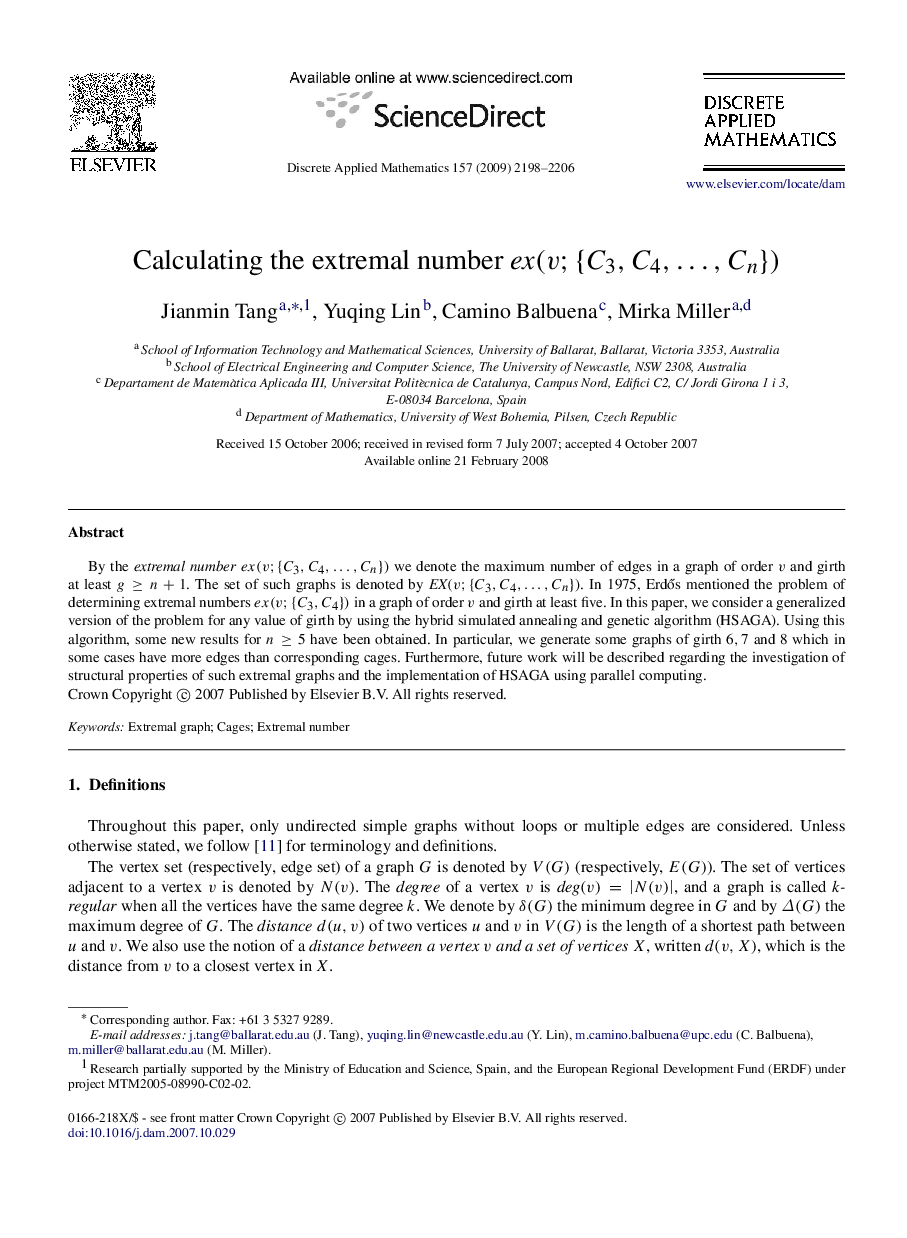| Article ID | Journal | Published Year | Pages | File Type |
|---|---|---|---|---|
| 420544 | Discrete Applied Mathematics | 2009 | 9 Pages |
By the extremal number ex(v;{C3,C4,…,Cn})ex(v;{C3,C4,…,Cn}) we denote the maximum number of edges in a graph of order vv and girth at least g≥n+1g≥n+1. The set of such graphs is denoted by EX(v;{C3,C4,…,Cn}). In 1975, Erdős mentioned the problem of determining extremal numbers ex(v;{C3,C4})ex(v;{C3,C4}) in a graph of order vv and girth at least five. In this paper, we consider a generalized version of the problem for any value of girth by using the hybrid simulated annealing and genetic algorithm (HSAGA). Using this algorithm, some new results for n≥5n≥5 have been obtained. In particular, we generate some graphs of girth 6,76,7 and 8 which in some cases have more edges than corresponding cages. Furthermore, future work will be described regarding the investigation of structural properties of such extremal graphs and the implementation of HSAGA using parallel computing.
